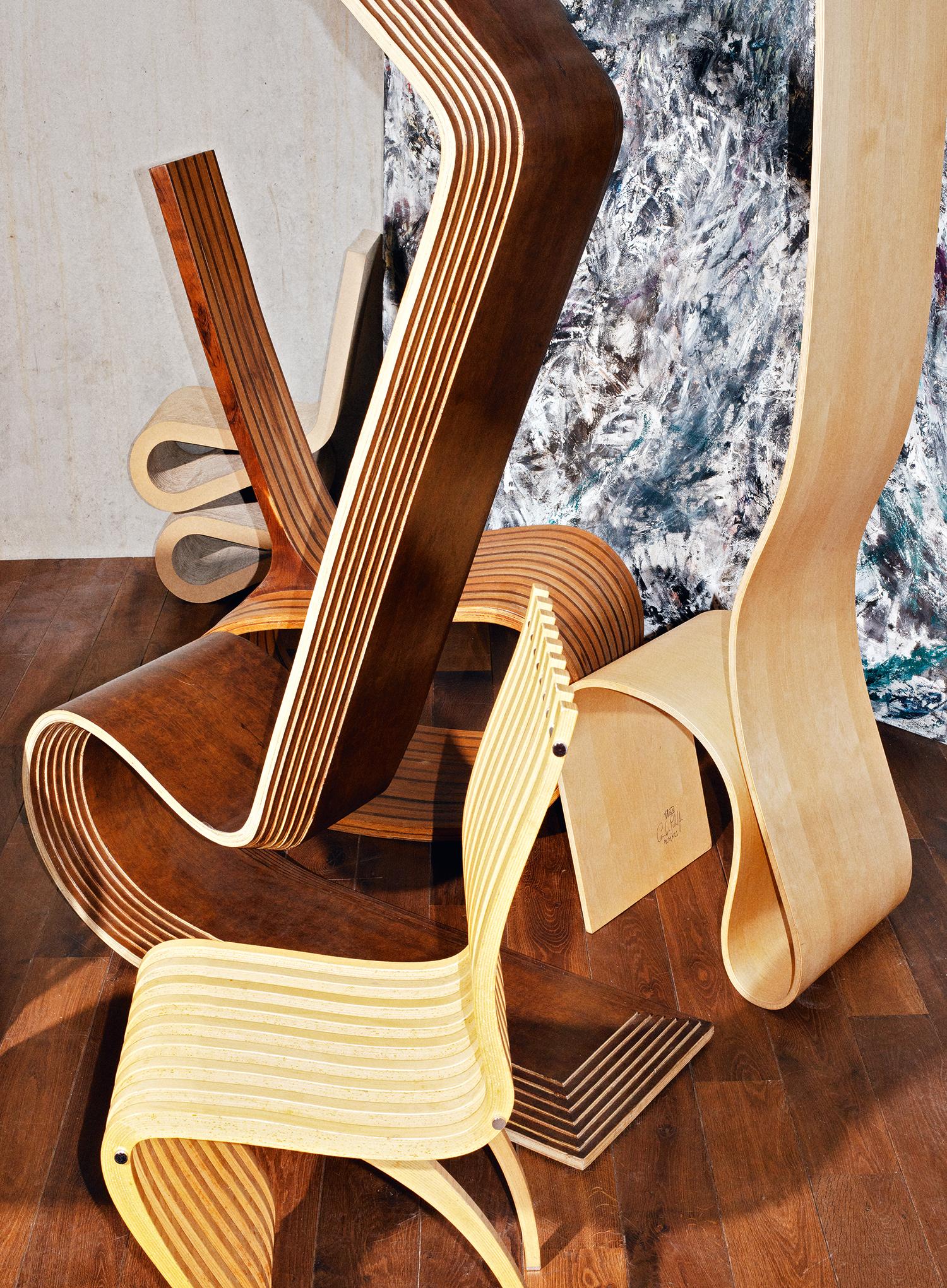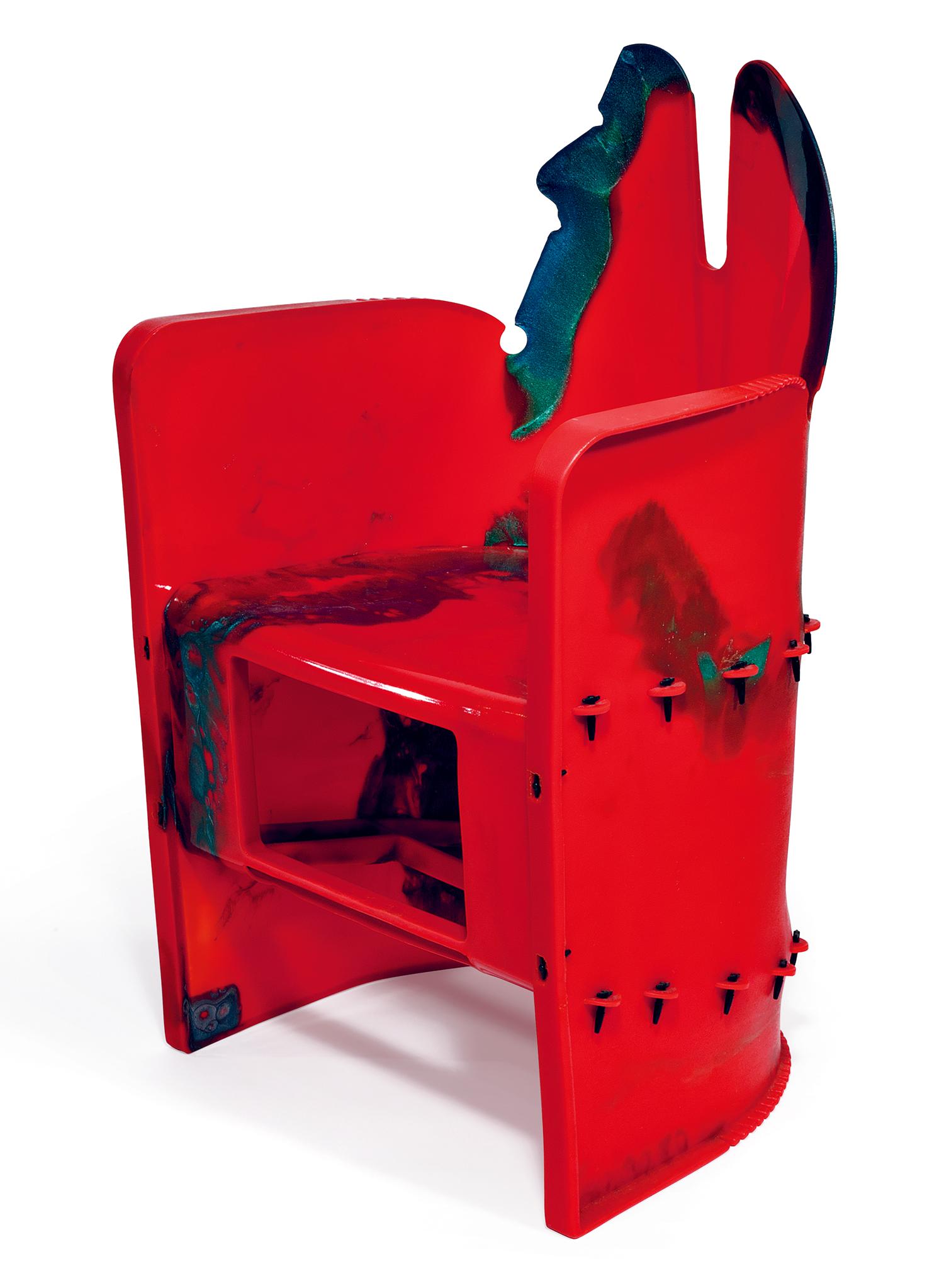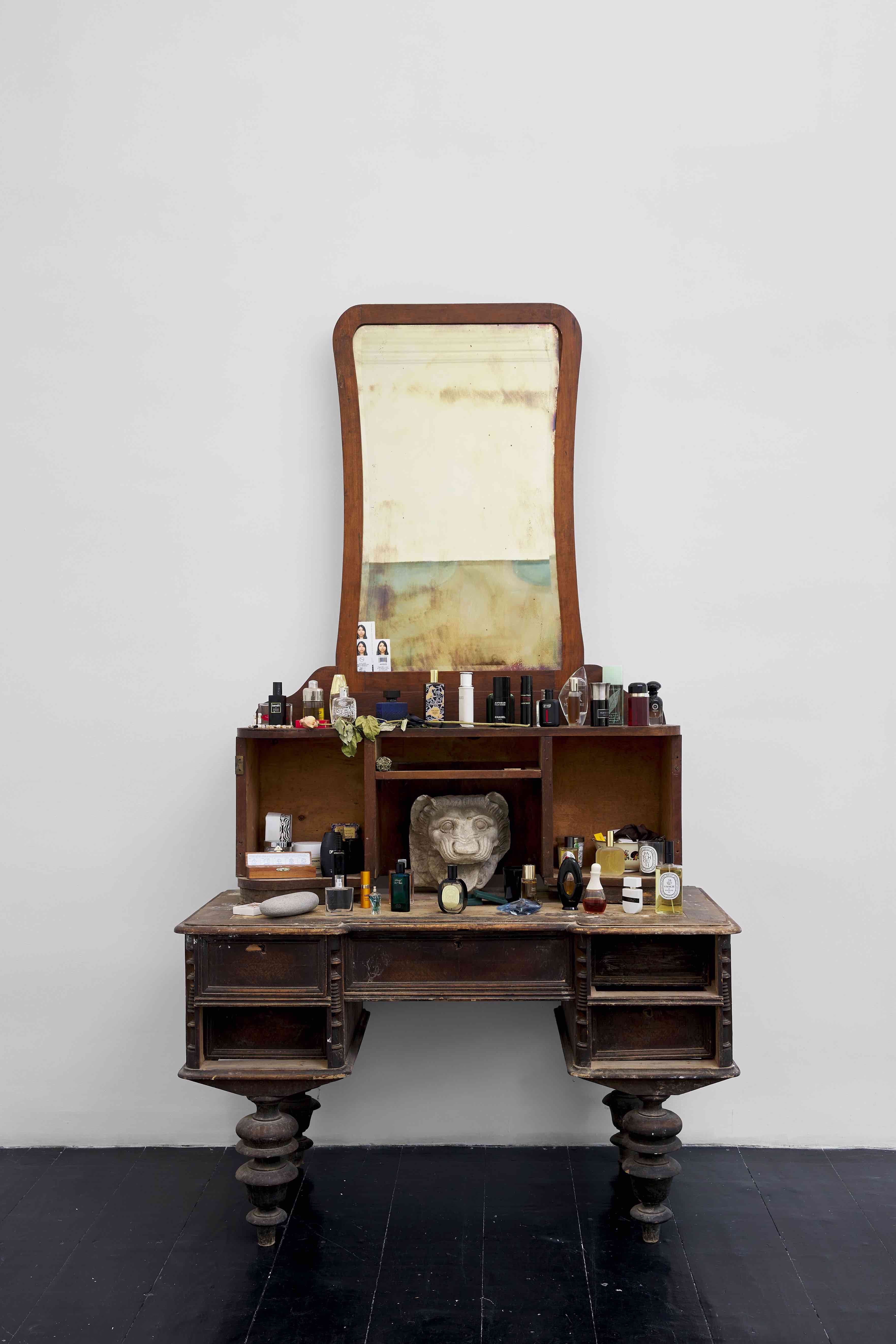The Art of Collecting Chairs
|CLAIRE KORON ELAT
In today's media landscape, a book review is often a slap on the back. A handshake among colleagues that says, “well done.” But we have never been afraid to offer critique when critique is due. In our print section Berlin Reviews, we've always tried to take the propositions of a book seriously and push them to their extremes.
Archive Berlin Review from our issue #43
Can you reflect on collecting through the materiality and formal structure of the collectibles? Bertjan Pot's Random Chair is constructed out of a myriad of black singular carbon fiber strings that build a concave configuration. It could be interpreted as the synthetic manifestation, comparable to neural networks but taking the shape of a chair, of the different branches that lead to an outstanding collection—where every work is in dialogue with each other. For real estate entrepreneur Thierry Barbier-Mueller, who owns one edition of the Random Chair, a chair is not just a functional piece of furniture, it is a sculpture with its own character and disposition, cutting across mere utility. The book The Spirit of Chairs (2022) is dedicated to the Swiss collector's vast assemblage of chairs, which consists of more than 650 pieces. Including essays by psychoanalyst Jamieson Webster and director Robert Wilson, among others, the comprehensive documentation includes hundreds of images of chairs by known designers, such as Mark Brazier-Jones, Ricardo Dalisi, and Jan des Bouvries, alongside an eagerly witty exploration of the Barbier-Mueller family's collecting mania.

At the age of 25, Thierry Barbier-Mueller, who recently passed away, decided to buy his first Georg Baselitz. Luckily, he was trusted enough by the dealer to pay for the two-meter painting in two installments. Thierry Barbier-Mueller's grandfather bought such a major, art historically significant work at the same age, but, unlike Thierry, he had to devote an entire year's income to the desire of owning a painting by Ferdinand Hodler. Other pieces of Thierry Barbier Mueller's collection are the glossy and metallic, yet organically shaped D-Sofa (1994) by industrial designer Ron Arad, the wooden chair Geoflux 101 (2007) by Robin Bara that has single parts folded like origami, and a red armchair by Gaetano Pesce that looks like it's made of just four padded balls. In the foreword of the book, his daughter Marie Barbier-Mueller, who is also the book's editor, writes: “Collecting is a senseless act. A way to find yourself, to get lost, to escape—it is, perhaps, the ultimate freedom.” Her idea of collecting transcends beyond any monetary concerns to a point where it isn't the physical collectible that counts but the cerebral (and visceral) act of collecting. It Is not about now much money flows In your collection; it Is about now much you devote yourself to it on a personal —opposed to those who amass art merely as an investment, only to later sell it on the secondary market.


Marcel Wander's piece Bum Bum Chair appears more like a bowl rather than a chair you would sit in, whereas Gaetano Pesce's Greene Street Chair has eight legs. These unconventional pieces exemplify the unorthodox and almost experimental approach of Thierry Barbier-Mueller's collection practice, proving that that his purchases were not dictated by the market. As Marie Barbier-Mueller alludes, collecting is not a linear path but similar to solving a mystical riddle of ownership, personal taste, and finding yourself.
The Spirit of Chairs is published by Lars Müller Publishers (2023).
Credits
- Text: CLAIRE KORON ELAT
Related Content

VITALI GELWICH’s Boring Book

H.R. GIGER’s Private Life Was Just as Dark, Sexy, and Pop as His Art

From NOAM CHOMSKY to ICE-T: GLEN E. FRIEDMAN’s Book “My Rules” is a Survey in Being Hardcore

032c Issue #43 “CULTURE CRISIS. Therapies for the confused” Summer 2023

A Martine Rose Slip: JORDAN/MARTIN HELL

Other People: SER SERPAS

ANSELM KIEFER’s Monuments

Collecting – and Celebrating – With Publisher BENEDIKT TASCHEN